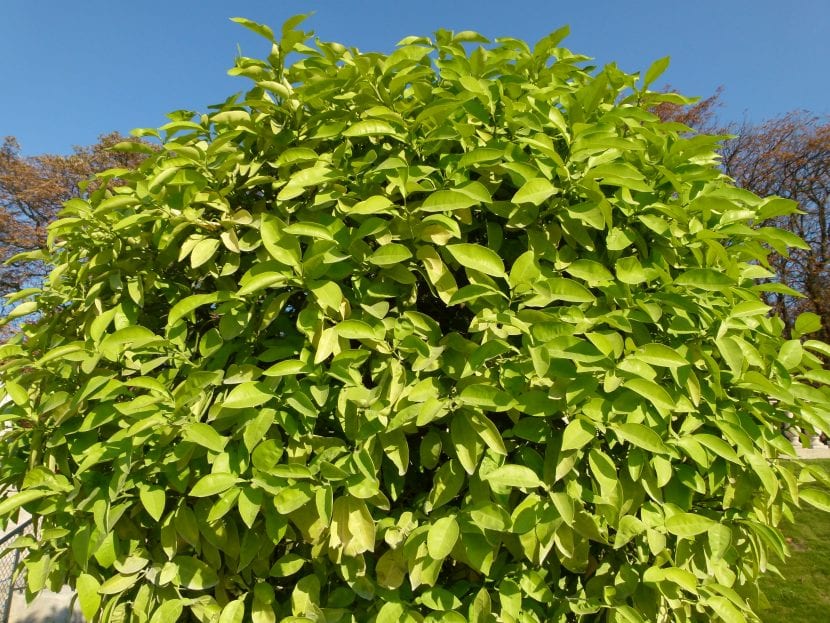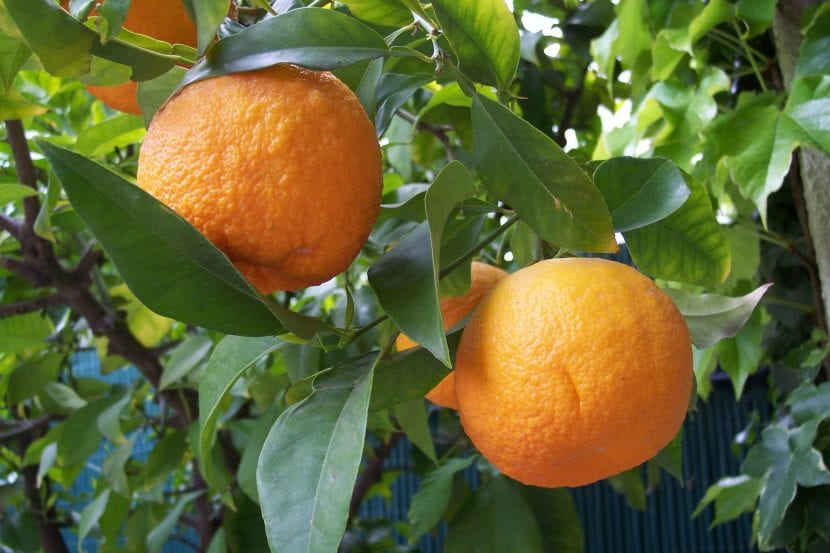
When you want to have a beautiful, evergreen tree that gives some shade, it is very interesting to take a look at citrus. Among them, the vast majority are fruit trees, that is, they produce edible fruits, but there are some that do not, such as the bitter orange.
This plant is one of the most planted in the streets, since it does not have invasive roots and is quite resistant to almost everything. So if I encourage you to get a copy. Why? Because of how easy it is to care for. Here is your file.
Origin and characteristics
Our protagonist is a hybrid tree between Citrus maxima and Citrus reticulata which is known as sour orange, bigarade orange, Andalusian orange, Seville orange, box orange, puppy orange and bitter orange. Its scientific name is Citrus x aurantium. Grows to a height of 7-8 meters, and develops axillary and sharp spines.
The leaves are elliptical, glossy dark green, petiolate and 50-115 x 30-55mm in size. The flowers are bisexual, white and fragrant. The fruit is globose, measuring 7 to 7,5cm and its pulp has a bitter-acid taste.
How do you take care of yourself?
If you get a copy, we recommend that you provide it with the following care:
- Location: outside, in full sun.
- Land: all types of soils, even limestone tolerates. Although yes, he prefers those that are slightly acidic.
- Irrigation: frequent. It has to be watered 3-4 times a week in summer and somewhat less the rest of the year.
- Subscriber: from spring to summer with organic fertilizers, such as guano, chicken manure (dry), or the earthworm humus.
- Planting time: in spring.
- Multiplication: by seeds in spring.
- Rusticity: resistant up to -12ºC.
Uses
Ornamental
Bitter orange is widely used as an ornamental tree. Its flowers are very beautiful and it also provides shade. If we add to that that it resists cold and frost well, we have a very interesting garden plant.
Medicinal
- Flower essential oil: used as a tranquilizer, mild hypnotic, spasmolytic.
- Pericarp (the fleshy part of the fruit): used for edema, diarrhea, hemorrhoids, varicose veins, irritable bowel syndrome, loss of appetite.
- Flowers and leaves: used for nervous coughs, insomnia, anxiety.

Did you know the bitter orange tree?